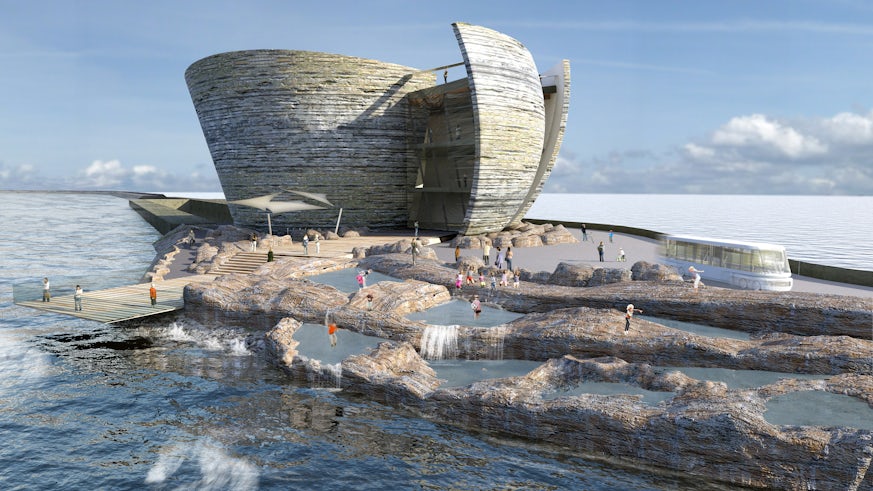Cardiff Tidal Lagoon ‘could power every home in Wales,’ says Chief Executive
7 September 2017

Mark Shorrock, Chief Executive of Tidal Lagoon Power, used a Cardiff University event to outline his company’s ambitions to harness the energy of the Seven Estuary.
Speaking to industry, academics and government representatives, the energy entrepreneur explained how Tidal Lagoon Power could also create a multi-billion export market for British-made turbines, generators and expertise in technology and engineering.
The first tidal lagoon is proposed for Swansea Bay. Tidal Lagoon Power believes the £1.3bn project could meet the annual electricity requirement of 90% of the homes in the area.
The company argues an even bigger £8bn Cardiff tidal lagoon would generate around ten times the power, with a potential annual power output of around 5.5TWh – the equivalent of the annual electricity requirement of every home in Wales.
Mark Shorrock said: “Our vision begins in Swansea Bay with the world’s first tidal lagoon. Consented in June 2015, the project is the pathfinder for a new global industry; the heart of which will be here in South Wales..."

"Cardiff Tidal Lagoon is now being developed as the first full-scale lagoon in our programme. With a potential installed capacity of around 3GW, this project could provide enough green, clean home-grown power for every home in Wales."
Tidal Lagoon Power says the project will involve £8 billion of private capital, and has the potential to create and sustain over 8,000 Welsh and UK manufacturing jobs in the project’s supply chain.
Enclosing an area of coastline behind a man-made structure, a tidal lagoon uses the natural rise and fall of tides to generate electricity. The structure creates a difference in water level height between the sea and the area inside the lagoon.
When the difference in height is at the optimal level, the structure allows the water to rush into the lagoon, driving the turbines that generate electricity. The process can be repeated four times every 24 hours: twice when the tide comes in and twice as it goes out.

"This event captured what we believe in as Cardiff University: bringing together academia and business, open discussion of major issues, exploring ideas and technology of international significance."
By enclosing approximately 70 km2 of the Estuary, Tidal Lagoon Power says the project would be able to pass over 800 million m3 of water through its turbines on each tidal cycle, more than 11 times the volume of water available to the pathfinder project at Swansea Bay.
The evening was organised by Cardiff University’s Innovation Network, which has promoted business-university interactions for over two decades.




